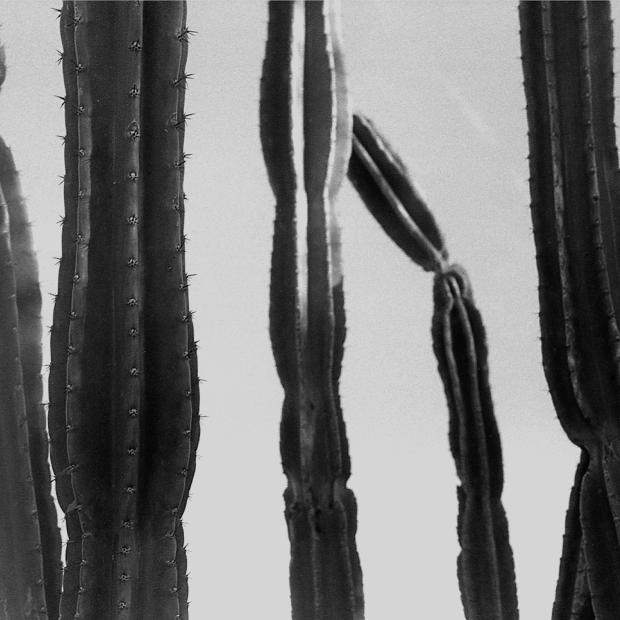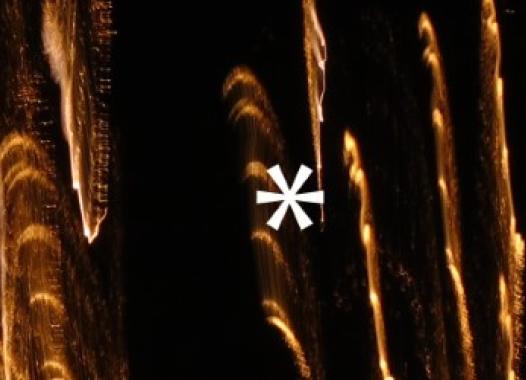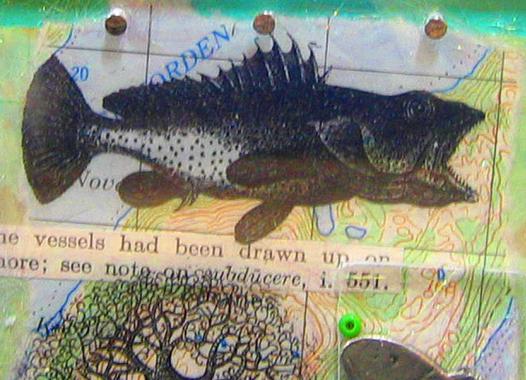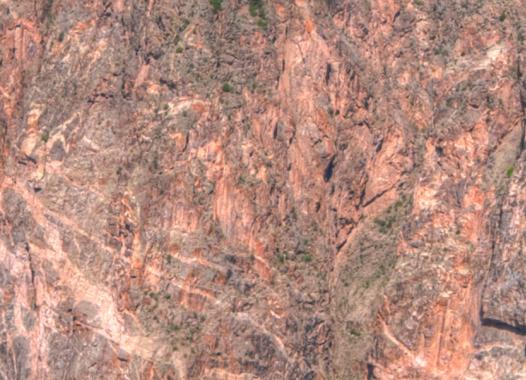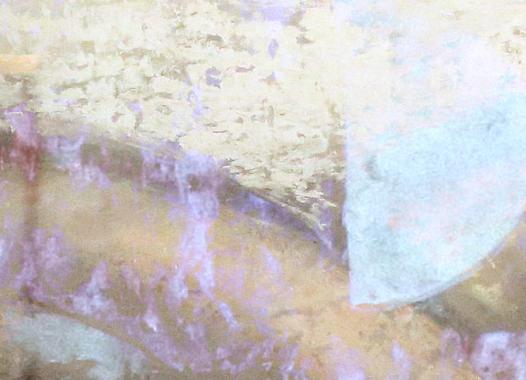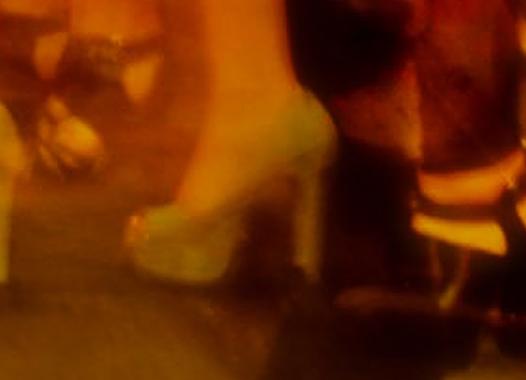
672
In his poem ‘Hymn to Pan’ (1919), the occultist Aleister Crowley offers an image of Pan that, one suspects, few of his contemporaries eagerly embraced. Crowley presents the demigod as a transsexual, trans-species cyborg that is artificial and biological, mineral and vegetable, shepherd and sheep, sexual attacker and willing victim.
I am thy mate, I am thy man,
Goat of thy flock, I am gold, I am god,
Flesh to thy bone, flower to thy rod.
With hoofs of steel I race on the rocks
Through solstice stubborn to equinox.
And I rave; and I rape and I rip and I rent
Everlasting, world without end.
Mannikin, maiden, maenad, man,
In the might of Pan.[1]
‘Everlasting’ and ‘without end’, Pan embodies a state of being where time and space lose any semblance of meaning, and identity becomes utterly unstable on the craggy rocks of the eternal. The narrator’s repeated ‘I’ in the poem comes across less as an act of self-affirmation than as a desperate attempt at a sense of cohesion in an environment characterized by chaos. How, one is led to wonder, did such a rapacious, threatening persona leap forth from the pagan interests and aesthetics of the Victorian era?
During the nineteenth century, British attention to paganism arose through various historical events and cultural developments. These include fresh archaeological discoveries in Egypt and a growing interest in Egyptian history; the rise of spiritualism, theosophy, and new occult movements; the formation of the Folklore Society in 1878 and an increased investment in folkloric studies in general; and the late-Victorian Celtic Renaissance. Authors, artists, philosophers, scientists, and laypeople increasingly turned to Celtic, Eastern, Egyptian, Greco-Roman, and other forms of paganism for inspiration and values that were not driven by contemporary industrialism, materialism, and consumerism. From aesthetic motifs in Decadent art and literature to earnest engagements with nationalist and socialist politics, these interests and beliefs eventually cohered sufficiently to come to be known as the neopagan movement (which ran from roughly 1870 to 1920). During this period, the term ‘neopaganism’ was used to distinguish, from classical pagan mythology, the current set of spiritualities, cultures, and methodologies sustained by individuals who often felt a deep, personal investment in these ecological faiths and their seemingly uninhibiting philosophies and respect for diversity. Although the term has resurfaced recently to address forms of paganism from roughly the past fifty years, in this article I use ‘neopaganism’ to refer only to aspects of the later Victorian and Edwardian periods.
Crowley’s ‘Hymn to Pan’, with its sadomasochistic revision of classical motifs, occult allusions, and articulations of heterodox identifications and desires, suggests the breadth of perspectives that the neopagan movement entertained. The demigod Pan himself rose to prominence in Western culture during the nineteenth century, his persona and relationship with British society altering as he fulfilled increasingly important spiritual, cultural, and philosophical roles. While the Romantic Pan had appeared predominantly as a pastoral spirit, the animistic version of Crowley’s era was a force of nature depicted as horrifying in its utter implosion of conventional signifying systems and the notion of the human itself. This fin-de-siècle manifestation of Pan not only serves as a succinct formulation of the earth-based philosophies defined as neopaganism, but also foreshadows recent post-humanist and eco-spiritualist theorizations, or what Bron Taylor refers to as ‘dark green religion’.[2] Like Crowley’s hymn, both neopaganism and eco-theory have as a defining question the place of the humanist individual in a nature-centred belief system that stands in opposition not only to scientific materialism, but also to the industrialism and consumerism of the age. Adding writings by Edward Carpenter, E.F. Benson, and Michael Field to my consideration of Crowley’s poem, I wish to offer a sense of the ways in which notably diverse works from turn-of-the-century Britain engaged a neopagan ecology that presaged recent post-humanist inquiry into the spiritual relationship of the self to nature.
The rise of eco-paganism
The acceptance of paganism in mainstream society has grown throughout the twentieth century, with an increasing number of legal, religious, and other institutions acknowledging its validity, especially in Europe. This development has been buttressed by the attention paganism has continued to gain as part of a broad philosophical and environmental discussion regarding humans’ function as a part of nature. Even thirty-five years ago, Margot Adler could propose that, if contemporary paganism were presented, as it accurately could be, as ‘an intellectual and artistic movement whose adherents have new perceptions of the nature of reality, the place of sexuality, and the meaning of community, academics would flock to study it’.[3] Adler points out, however, that scholars in the 1970s, when she voiced this position, were uncomfortable with terms such as ‘pagan’ and ‘witch’, as well as with paganism’s affiliation with the occult. That said, a number of scholars over the past forty years have published works that support outlooks and arguments also held by contemporary pagans. Some such as Gilles Deleuze and Félix Guattari, Jacques Derrida, and Timothy Morton have established key paradigms for our conceptions of species interrelations and the seeming anthropocentricism of contemporary notions of nature and environment.[4] Donna Haraway, Carey Wolfe, and others working from feminist, queer, and post-humanist perspectives have foregrounded de-individuation and inter-species communication while exploring the structural and imaginative limits of language.[5] And still others—such as Emma Restall Orr, and Chas Clifton and Graham Harvey—have theorized issues of ecology, diversity, and selfhood through discourses invested in paganism itself, giving rise to the field of eco-pagan studies.[6]
The richness and diversity of pagan perspectives over the centuries have resulted in a panoply of earth-based spiritualities that are not themselves in full accord. Indeed, recent scholarship often characterizes this very diversity and malleability as a key strength of paganism, responsible in part for its vitality and growth. This positive formulation of variety, changeability, and contradiction has found reinforcement from its kinship with scholarly approaches such as feminism, queer studies, and post-humanism. Similarly, pagan notions of the natural are neither fixed nor singular. Nature is recognized—to suggest some of the many perspectives—as a beautiful, threatening organic force; as one or more actual goddesses or gods; and as an organic environment that can exist, has existed, or does exist (at least in part) outside the anthropocene.
Moreover, as Clifton and Harvey argue, the re-conceptions of nature that have arisen over the past two centuries due to industrialization and urbanization have fostered the reassessment and refashioning of paganism itself: ‘Trends that underlay phenomena as diverse as the popularity of Romanticism and the creation of wilderness reserves also led to a re-evaluation of the meaning and associations of the word “pagan”’.[7] Rather than say that paganism changed due to Romanticism and conservation, Clifton and Harvey astutely propose only that humans’ assessments of earth-based spiritualities have changed. The possibility of an imperceptible, fundamental paganism remains unchallenged. Adler similarly notes that contemporary pagans ‘sense an aliveness and “presence” in nature … they tend to view humanity’s “advancement” and separation from nature as the prime source of alienation’.[8]
Adler represents nature as a mysterious, living force, an agent operating beyond human control. But she also describes humans as distinct from this force and able to separate themselves from it—whether intentionally or through some sense of superiority. She notes, for example, that most pagan groups have ‘grown up in cities, where the loss of enrichment from the natural world is most easily perceived’. Her claim is supported by the loudest voices of late-Victorian and Edwardian neopaganism, in which it was not the rural working class most invested in and engaged with nature that drove the movement, but a variety of urban, middle-class intellectuals and artists such as Crowley, Carpenter, Field, and Benson. As Adler implies, for the past two centuries, much of paganism has been locked into a Romanticist relationship between the individual human and a false ideal called nature, the latter being not a pre-existing earth-rooted force but the result of the bourgeois ego’s sense of loss.
In making her point, Adler herself assumes that pagans develop their spiritual conception of reality on the foundational assumption of a coherent self that is rooted in the mind. This ego, then, creates a notion of nature as a separate player in the pagan experience—in fact, relies on such a gesture of alienation to establish its own selfhood. In Ecology without Nature (2007), Timothy Morton warns against just such a slippage. Approaching the subject from a nonpagan standpoint, Morton argues that the most effective way to ensure the welfare of all forms of sentient beings is to reject our popular idealization of nature because it assumes a humanist perspective that aestheticizes the ecological and thus offers a false view of reality. He proposes, instead, a model of ecology that is void of nature precisely because the latter has become a ‘transcendental principle’ tethered to a politics of truth and purity that is not innately inherent to the organic realm.[9] For Morton, if actual environmentalist change is to be achieved, the discussion must adopt a model that does not assume that humans and the environment exist as distinguishable phenomena.
While Morton himself works to avoid this, the risk with his model is that ‘ecology’ simply becomes a hollowed-out signifier that ultimately fulfils the same function as ‘nature’, with the Romanticist aesthetic replaced by a formulation that appears more objective because of its leaner, meaner design. Clifton and Harvey’s sensitivity to the conceptual function of ‘nature’ in paganism, meanwhile, brings forward the importance of recognizing earth-based spiritualities as offering an ecological model, but one where ‘ecology’ refers to the mutating imbrications among all animist entities within the environment. In their post-humanist formulation, anthropocentrism is undermined while the ecological is enhanced and reinforced by the spiritual. Nevertheless, in eco-pagan scholarship there tends to remain a slip between the chalice and the lip; while the theorists have articulated the need for a post-Cartesian decentralization of the self within pagan ecology, practising pagans remain keenly sensitive to the difference between, on one hand, their individuated identities as responsible, engaged, and politicized members of modern society and, on the other, their transitory loss of selfhood during a spiritual act or experience.
Contributors to the neopagan movement of the previous century were well aware of this shifting mode of operation within the pagan identity. Humans in a de-individuated state would not be interested or able to theorize their position, it being one which itself questions the notion of the human, let alone the theorist. As Edward Carpenter’s scholarly chapters demonstrate, late-Victorian and Edwardian concerns regarding Western society’s health and prosperity (two traits often operating in conflict) were likewise recognized as fully enmeshed with neopaganism’s attention to the issues of individuality that has proven a stumbling block in recent ecological and eco-pagan scholarship. Carpenter, Field, and Benson all propose variations on how a loss of selfhood might in fact enhance a collective intimacy and sense of mutual responsibility through the entire ecological context.
Edward Carpenter’s quiet eye
Carpenter was vividly aware that the period during which he was writing was witnessing the culmination of a century marked by a growing interest in all things pagan. As he light-heartedly summarizes, the ‘great boom in Sungods’ in the earlier part of the nineteenth century was followed by ‘the phallic explanation of everything’, where ‘deities were all polite names for the organs and powers of procreation’. Then came euhemerism, which proposes that deities were simply mythologized people, and finally, the neopagan movement, which ‘thinks little of sungods, and pays more attention to Earth and Nature spirits, to gnomes and demons and vegetation-sprites’.[10] One might sense flippancy in Carpenter’s tone, but he took the subject of pagan spiritualities very seriously, bestowing a degree of validity on all of the approaches he mentions. At the same time, he did not define himself as a pagan, although his socialism, gay activism, rural lifestyle, and studies in theosophy and Eastern mysticism all reflect values found in neopaganism.
The rhetoric of Carpenter’s best-known work, Civilisation, Its Cause and Cure (1889), explicitly reflects the influence of the home-grown socialism to which he was a key contributor, with its title chapter being first delivered in 1888 as a lecture to the Fabian Society. Carpenter envisions civilization as a disease curable only by having everyone develop a closer affinity with one’s natural environment and ‘inner nature’, resulting in a network of mutual sympathy.[11] Citing John Ruskin, he describes society’s sense of unrest as an unhealthy condition that permeates our moral nature, which he contrasts with ‘the naive insouciance of the pagan and primitive world’.[12] Carpenter summarizes his position as follows:
Thus three things, (1) the realization of a new order of Society, in closest touch with Nature, and in which the diseases of class-domination and Parasitism will have finally ceased; (2) the realization of a Science which will no longer be a mere thing of the brain, but a part of Actual Life; and (3) the realization of a Morality which will signalise and express the vital and organic unity of man with his fellows—these three things will become the heralds of a new era of humanity.[13]
It is, moreover, not an exclusively human society that Carpenter recognizes but one that would conceptually include other sentient beings. He commends animals, as well as ‘early man’, because ‘an almost unerring instinct and selective power rules their actions and organization’. For Carpenter, the ideal is the development of humans through the process of civilization to a state free of self-consciousness akin to that experienced by certain animals and peoples, such as various African tribes, indigenous North Americans, and ancient Greeks who took part in ‘Dionysiac festivals’. Civilized humans, conversely, can only allow themselves to exist in opposition to their environment; as Carpenter puts it, ‘when Alderman Smith plants his villa [in nature], the gods pack up their trunks and depart’.[14]
It is in his chapter on ‘Science of the Future’ in the same work, however, that Carpenter articulates a neopagan ecology most eloquently. Much like Adler and Restall Orr, he envisions an age when science, ‘by direct and the most living contact with Nature in every form, learning to enter into direct personal sense-relationship with every phenomenon and phase’, will become ‘fully conscious of a vast organization—absolutely perfect and intimately knit from its centre to its utmost circumference … existing inchoate or embryonic in every man, animal, plant, or other creature’. For Carpenter, this state will be characterized by ‘patient listening and the quiet eye, and love and faith’, and the ‘companionship of the animals and the trees and the stars’, ‘listening well what they themselves have to say’. In this passage the peculiar image of the eye that can but does not speak creates a conflation of the senses that fragments the traditional image of the coherent subject even as it posits an overarching trans-species universalism that seems calm and coherent.[15]
Published thirty-one years after Civilisation, Carpenter’s Pagan and Christian Creeds (1920) more explicitly affirms the political implications of eco-paganism. Pagan scholar Thom van Dooren has recently argued that ‘social, political, legal, and economic changes’ are not sufficient to address ecological disparities; citing scholarship in deep ecology, ecofeminism, and Christian environmentalism as examples, he notes a growing awareness of the need for ‘a worldview in which our deep kinship with others, both human and nonhuman, is acknowledged and honoured’.[16] The argument reiterates Carpenter’s politics of the ‘nature of the self’ as an ecology of ‘universal Equality’ that is the ‘mystic root-conception of Democracy’. For Carpenter, as for van Dooren, the boundlessness of the self does not mean one should ignore one’s responsibility to others. ‘The more vividly we feel our organic unity with the whole’, he argues, ‘the less shall we be able to separate off the local self and enclose it within any definition’.[17] Thus, after the book’s exploration of various forms of belief, the final appendix of Pagan and Christian Creeds promotes human progress to an ideal, earth-based spirituality. He discourages the cult of individuality (as he had in Civilisation) and the self-consciousness that gave rise to religion itself, advocating instead a mental state akin to that of non-human animals, who cannot conceive of themselves as entities separate from their environment. Ultimately, Carpenter urges a creative mental engagement that would draw the individual into a non-humanist, all-inclusive perspective. E.F. Benson and Michael Field each offer distinct speculative renderings of the benefits and losses that such an experience could entail.
The post-human spirit of E.F. Benson’s and Michael Field’s pagan writing
There is no record of E.F. Benson having belonged to any occult societies,[18] but he would have been well versed in classical paganism from his studies at King’s College, Cambridge, knowledge further developed by his participation in aesthetic circles that included individuals such as Oscar Wilde and Alfred Douglas.[19] His short story ‘The Man Who Went Too Far’ (1912) alone references a number of neopaganism’s common tropes—including classical elements such as Pan, indigenous magical entities such as fays and fairies, and the romanticized spiritualization of a bourgeois rural lifestyle. The story also belies a stronger interest in paganism as a philosophical approach to life than records of this secretive author’s life can confirm. The beginning of the work, for example, does more than assume a familiarity among his readers with aspects of contemporary paganism, engaging them in a serious ambivalence regarding its influence. ‘The little village of St. Faith’s’, the narrator tells us,
nestles in a hollow of wooded hill up on the north bank of the river Fawn in the county of Hampshire, huddling close round its grey Norman church as if for spiritual protection against the fays and fairies, the trolls and ‘little people’, who might be supposed still to linger in the vast empty spaces of the New Forest, and to come after dusk and do their doubtful businesses.[20]
Even in this very first sentence, one notes the narrator’s anxious diminution of paganism seen as a threat to a traditional settlement literally defined by Christian faith. The image of an entire village structured, it would appear subconsciously or almost organically, against the influence of pagan forces is more than an effective conceit. At the time that Benson was writing his story, there existed in Britain a variety of pagan-inflected interests ranging from the idealization of a simple, rural lifestyle to a belief that earth-based spiritualities involved interaction with immoral (even satanic) forces beyond human control. Benson’s story reflects this range of responses, from one character light-spiritedly mocking ‘the smoking altar of vegetarianism’ to the narrator conflating paganism with the occult, and alluding to its immorality through adjectives such as ‘monstrous’ and ‘devious’.[21] One concern regarding paganism’s popularity was that a person could be drawn from the innocuous end of this range to the more threatening. In the opening image of ‘The Man Who Went Too Far’, the anxiety around this potential loss of self-control to a monstrously all-consuming paganism initiates the philosophical conundrum that the story attempts to address.
Benson’s hero is an artist named Frank Halton who has given up city life for a bucolic existence among the flowers, bees, and wild animals that exist on the edge of St Faith’s. During a few years of living this lifestyle, he becomes—Dorian Gray-like—increasingly beautiful and youthful, much to the admiration of his older friend, Darcy, who comes for a visit from the city. If Dorian was plagued by what his society saw as a sexually inflected deviancy, Frank is depicted as going too far in the other direction, undermining the productivist ethos of modern British society by retiring to an isolated, rural, and idle life characterized by an excessively healthy diet and an intense intimacy with the local fauna. However, if the hero’s need of a male servant does not forewarn the reader that Benson is fully aware of the naivety of this lifestyle ideal, Frank’s egocentric description of his immersion into nature should make it apparent: ‘I am one with it … the river and I, I and the river. The coolness and splash of it is I, and the water-herbs that wave in it are I also. And my strength and my limbs are not mine but the river’s. It is all one, all one’. As with Carpenter, the ‘paganism’ depicted by Benson encourages the dissolution of ego accompanied by a ‘great native instinct to be happy without any care at all for morality, or human law or divine law’.[22] This description, meant to celebrate a loss of selfhood in favour of a fluid notion of being, however, is ironically marked by the repeated resurfacing of an ‘I’ unwilling to drown. As with the narrator of Crowley’s ‘Hymn to Pan’, Frank describes himself sometimes as subsumed by the pagan waters, and at other times as himself subsuming them. This vacillation suggests that Benson is not aiming simply to affirm the pagan, but to offer an earnest, somewhat sceptical engagement with the idealization of a universal harmony captured, for example, in Carpenter’s ‘quiet eye’.
Frank advocates a view of life and death as potential states of absorption into an ecosystem that would liberate one of responsibility, judgement, and grief. But as Darcy points out, his friend fails to recognize that suffering is also part of the ecological realm. Frank is, for example, utterly incapable of dealing with signs of sorrow or pain (when a child falls and begins to cry, the hero plugs his ears and flees in horror). Notably, when Darcy confronts Frank about his conflicted views, the latter proves open to the possibility that his final spiritual revelation at the moment of death may be that of the inevitability of suffering. Thus, when the demigod Pan who has been seducing Frank with his pipes throughout the story comes to him in the night and violently tramples him as he sleeps, the doubting Darcy only hears screams and registers terror on the victim’s face. But as Frank gradually dies, his own visage, the narrator tells us, changes to one of blissful calm. The suggestion is that Darcy’s cynicism closes him off from a pagan vision of the world and the release from social strictures that it offers; meanwhile, Frank’s increasing sacrifice of his ego to the sensually alluring goat-god attains a mystical fulfilment beyond human comprehension and verbal articulation.
Thus, rather than moving to any particular resolution, the narrative builds a sense of panic while at the same time encouraging one to identify with Frank’s climactic engagement with his own post-humanist self-dissolution. The story’s homoeroticism, meanwhile, reflects the theoretical imbrication of the neopagan movement with a queer vision of identity deconstruction that is also appearing in recent pagan scholarship.[23] The combination of the story’s philosophical idealism and its hero’s quest for happiness unhindered by ‘morality, or human law or divine law’ is, as Benson would have recognized, one that also characterized the sexual politics of the time.[24] Queer interests have been buoyed for over a century by paganism’s conception of diversity and difference as spiritual sources of power and agency. However, as recent eco-pagan scholars have noted and as Michael Field’s poetry demonstrates, one cannot assume that individuals who adapted pagan tropes and values to their queer interests consistently self-identified by gender and sexuality more forcefully than by spirituality.
In the past ten years, a considerable amount of scholarship has appeared on Michael Field (lovers Katherine Bradley and Edith Cooper) and their use of Greco-Roman paganism to celebrate lesbian desire, same-sex eroticism, and the fluidity of sexuality in general. [25] Their poetic engagement with classical motifs often spiritualizes the non-normative desires and affections to which they allude, thereby seemingly cleansing them of the perceived taint of carnal deviancy. As Yopie Prins, Marion Thain, and others have demonstrated, for those readers with the knowledge to translate the pagan references from a sexual standpoint, Field’s poetry offers a reimagining of the age as one in which sensuality and sexuality need not be articulated through homophobic signifying structures. Likewise, reading the correlation in the other direction, the erotic explorations and queer affirmations of Field’s verse support an understanding of their work as a sincere, spiritual engagement with the pagan politics of identity dissipation. Foreshadowing recent eco-pagan efforts to decentre the individual perspective in ecological engagements, the decision to represent themselves as a single force named Michael Field reflects a vision of identity as a shared, transmutational space.
The poets made a concerted effort to clarify that their 1892 collection, Sight and Song, is not merely a series of responses to famous paintings. Rather, it is an attempt, they explain in the preface, ‘to express not so much what these pictures are to the poet, but rather what poetry they objectively incarnate’.[26] Like the hero of Benson’s story, the women give themselves up to a form of other-worldly communication, an act of mediation that is also a participation in sympathetic conversations begun centuries earlier. Their artistic process, the poets explain, involves the erasure of human influence in an effort to attain ‘sight as pure as the gazer can refine it’, with the poets subordinating their own agency to ‘what the lines and colours of certain chosen pictures sing in themselves’.
As the poetry suggests, this chain of correspondences extends beyond art forms to include the sensual discourse of pagan spirituality. Rather than create poetic renderings of visual renderings of a spiritual ecology, the poets give themselves up to the affective experience of the paintings’ engagements with classical paganism. ‘The effort to see things from their own centre’, Field declares, ‘by suppressing the habitual centralization of the visible in ourselves, is a process by which we eliminate our idiosyncrasies and obtain an impression clearer, less passive, more intimate’.[27] While the poets inevitably do leave their mark on their creative work, Field’s emphasis is nevertheless on the act of decentring the self, giving up the ego to an immeasurable, transhistorical engagement which results in an enhanced intimacy.
The poems in Sight and Song emphasize pagan deities and Christian saints, particularly female ones, reflecting Field’s interest in the relationship between women’s power and their sensuality. The context for the vast majority of the poems’ scenes, meanwhile, is the natural environment, which Field often portrays as a persona itself. The central characters in poems such as ‘Correggio’s Saint Sebastian’, ‘Giorgione’s Shepherd Boy’, and ‘Piero di Cosimo’s Death of Procris’ are not simply positioned within a natural environment but portrayed as themselves part of the ecosystem. Most obviously, various poems include representations of fauns and angels in which the human and nonhuman are fused together. These hooved or winged inter-species figures generally function as symbolic reinforcements of the main subjects’ own eco-pagan character. In poems such as ‘Correggio’s Antiope’ and ‘Botticelli’s Birth of Venus’, Field pushes the conflation further. Unlike Crowley’s and Benson’s depictions of pagan self-dissolution as violent and horrifying, Field’s poems rewrite myth in order to foreground an erotic release of the self to an amorous pagan ecology.
In response to Correggio’s painting Antiope (c. 1528), Field sandwiches the glowing nude Amazon between a sleeping cupid and a satyr, offering a polytheistic rendering of Antiope’s sensual spirituality. Following the traditional myth, ‘Correggio’s Antiope’ notes that the satyr is actually Zeus (or Jupiter) in disguise who, enamoured by the hunter, is about to rape her. The god’s deviousness imbues paganism with a note of cruel deception, but Field offers a unique contribution to the myth that undermines a correlation of paganism purely with characters who, like Zeus here, enact heteronormative power paradigms. The poem focuses almost entirely on the figure of the sleeping Antiope, with Zeus appearing only towards the end and doing little more than allowing the reader a fresh vantage point to continue consuming the heroine’s beauty. Throughout the piece, however, the Amazon is portrayed as entwined with the natural environment. As she ‘cuddles on the lap of earth’, next to her lies ‘her woodland armory’, a reference to the ‘doe-skin’ quiver of arrows in Correggio’s painting, but also more subtly to the trees in which she is bowered; she lies
curled beyond the rim
of oaks that slide
Their lowest branches, long and slim,
Close to her side;
Their foliage touches her with lobes
half-gay, half-shadowed, green and brown.
‘The supineness of her sleep’, we are told, is ‘Leaf-fringed and deep’, the environment itself becoming an erotic agent, sliding its limbs along her body, caressing her with its leaves.[28] Thus, to Zeus’s false and violent disguise, Field offers a pagan counter in the female warrior sensually engaged with the animate ecology itself.
A similar personification of the eco-pagan can be found in the poem ‘Botticelli’s Birth of Venus’. Botticelli’s 1486 painting The Birth of Venus on which Field’s piece is based has been interpreted as rendering the Neoplatonic notion that the admiration of physical beauty functions as an avenue to comprehending spiritual beauty. But Field opens the poem not with the tantalizing central figure but with a description of wavelets, a shell, roses, birds, then garments, a breeze, locks of hair on the wind, and only then, at the end of the first stanza, ‘a girl’ (13). Having just been born from the water’s depths, Venus is portrayed less as a goddess than as an innocent, frail human with a ‘chill, wan body’ needing protection from the ‘crisp air’. Botticelli’s painting captures this moment of Venus’s self-realization but, as Field describes, even as it is introduced the individual is already being enwrapped again within the ecosystem, as Flora’s ‘rose’ cloak covered in flowers encompasses her cold flesh. Rather than confirming a Neoplatonic ideal, the poem dallies on the earthly elements in the artwork, eventually revealing the goddess in a fragile state of selfhood only to submerge her again, in the remaining three stanzas of the poem, among the natural elements and the pagan deities Flora, Zephyrus, and Boreas. Field ensures that the human figure is utterly, sensually human, rather than a deity controlling her surroundings. Or, more precisely, Venus is a sentient point of convergence among ecological elements that recognize no separation between the physical and the spiritual.
Conclusion
Timothy Morton has recently suggested that, to ensure the welfare of all sentient beings, we must first reject the idealization of the natural because this humanist aestheticization of the ecological creates a dysfunctional notion of reality. Meanwhile, eco-pagan theorists such as Chas Clifton and Graham Harvey have proposed that it is impossible to eradicate the spiritual from the ecological, but that an awareness of one’s veneration of nature can help ensure a desired fluctuation between one’s submergence into the eco-pagan, on the one hand, and one’s responsible awareness of the mutual influences of all elements of the ecology in which humans exist, on the other.
Similarly, diverse contributors to the neopagan movement depicted a pagan spirituality capable of undermining anthropocentrism while enhancing a responsible contribution to the ecological network—what Edward Carpenter describes as an ‘intimately knit’ organization engaged to the core of all living entities (Civilisation, 132-33). While E.F. Benson acknowledges his own inability to be certain of the outcome of sacrificing one’s selfhood to such an order, Aleister Crowley’s ‘Hymn to Pan’ confidently celebrates submission to what he represents as a form of chaos. Field, meanwhile, depicts gods and martyrs as sentient entities characterized by their fragility, intimacy, and mutual reliance on the rest of the natural environment. Carpenter, Benson, Crowley, and Field are unified, however, in not using paganism to escape their society’s anthropocentrism and hypocrisy, but to confront it. In Pagan and Christian Creeds, Carpenter proposes that one’s comprehension of the ego as shaped by and part of a larger ecological network fosters a sense of anxiety, which spurs the imaginative conception of a state of consciousness that ‘we here and there perceive in the rites and prophecies and mysteries of the early religions, and in the poetry and art and literature generally of the later civilizations’ (16). As the creative engagements of Benson, Crowley, and Field suggest, the neopagan movement was not simply an engagement with ancient belief systems that seemed frighteningly overwhelming. Rather, presaging post-humanism, it was a response to the industrial, materialist, and homogenizing capitalism that was threatening to be all-consuming and de-individuating.
Further Reading
de Angeles, Ly, Emma Restall Orr, and Thom van Dooren (eds). Pagan Visions for a Sustainable Future (Woodbury, MN: Llewellyn, 2005).
Denisoff, Dennis. ‘The Dissipating Nature of Decadent Paganism from Pater to Yeats’, Modernism/Modernity 15/3 (2008), 431-46.
Harvey, Graham. Contemporary Paganism: Religions of the Earth from Druids and Witches to Heathens and Ecofeminists, 2nd edn. (New York: New York University Press, 2011).
Merivale, Patricia. Pan the Goat-God: His Myth in Modern Times (Cambridge, MA: Harvard University Press, 1969).
Morton, Timothy. Ecology without Nature: Rethinking Environmental Aesthetics (Cambridge: Harvard University Press, 2007).
Orr, Emma Restall. Living with Honour: A Pagan Ethics (Ropley, Hants: John Hunt, 2007).
Taylor, Bron. Dark Green Religion: Nature, Spirituality, and the Planetary Future (Berkeley, CA: University of California Press, 2010).
[1] Aleister Crowley, ‘Hymn to Pan’, The Equinox 3/1 (March 1919), 7.
[1] Aleister Crowley, 'Hymn to Pan,' The Equinox 3/1 (March 1919), 7.
[2] Bron Taylor, Dark Green Religion: Nature, Spirituality, and the Planetary Future (Berkeley, CA: University of California Press, 2010).
[3] Margot Adler, Drawing down the Moon: Witches, Druids, Goddess-Worshippers, and Other Pagans in America Today (Boston, MA: Beacon, 1986), 5.
[4] Gilles Deleuze and Félix Guattari, A Thousand Plateaus (Minneapolis, MN: University of Minnesota Press, 1987); Jacques Derrida, The Animal that Therefore I Am (New York: Fordham University Press, 2009); Timothy Morton, Ecology Without Nature: Rethinking Environmental Aesthetics (Cambridge, MA: Harvard University Press, 2007).
[5] Donna Haraway, Simians, Cyborgs, and Women: The Reinvention of Nature (New York: Routledge, 1991) and When Species Meet (Minneapolis, MN: University of Minnesota Press, 2008); Carey Wolfe, Animal Rites (Chicago, IL: University Chicago Press, 2003).
[6] Emma Restall Orr, Living with Honour: A Pagan Ethics (Ropley, Hant: John Hunt, 2007); Chas Clifton and Graham Harvey (eds), The Paganism Reader (London: Routledge, 2004).
[7] Chas Clifton and Graham Harvey, ‘Introduction’ in The Paganism Reader, 3.
[10] Edward Carpenter, Pagan and Christian Creeds: Their Origin and Meaning (New York: Harcourt, Brace,1920) 10, 11.
[11] Edward Carpenter, Civilisation, Its Cause and Cure, and Other Essays (London: George Allen, 1921), 257.
[12] Ibid., 18.
[13] Ibid., 11.
[14] Ibid., 40-1, 43, 44n., 63.
[15] Ibid., 132-3.
[16] Thom van Dooren, ‘Dwelling in Sacred Community’, in Ly de Angeles, Emma Restall Orr, and Thom van Dooren (eds), Pagan Visions for a Sustainable Future (Woodbury, MN: Llewellyn, 2005), 257.
[17] Ibid., 308.
[18] Nicholas Freeman, ‘“Nothing of the Wild Wood”? Pan, Paganism and Spiritual Confusion in E.F. Benson’s “The Man Who Went Too Far”’, Literature and Theology 19/1 (March 2005), 26.
[19] Edward Carpenter, Aleister Crowley, and Katherine Bradley all studied at Cambridge (like Benson), and engaged to varying degrees with same-sex desires. The pattern reflects the sympathetic continuities between gay and neopagan politics at Cambridge during the Modernist era, although Benson’s same-sex interests are less marked than others’.
[20] E.F. Benson, Night Terrors: The Ghost Stories of E.F. Benson (Ware, Herts: Wordsworth, 2012), 121.
[21] Ibid., 125, 122.
[22] Ibid., 124, 133, 128.
[23] Recent discussions on the relationship of paganism to non-normative sexualities can be found in Adler’s ‘Radical Faeries and the Growth of Men’s Spirituality’, in Drawing Down the Moon, 338-48. See also Haraway’s discussion of ‘a post-gender world’ in Simians, Cyborgs, and Women, 150; and Marina Sala’s ‘Towards a Sacred Dance of the Sexes’, Pagan Visions for a Sustainable Future, 97-120.
[24] Benson, Night Terrors, 128. In his article for this collection, Marcus Waithe notes that Edward Carpenter situated his homosexual vision primarily within classical and Renaissance paradigms.
[25] See, for example, the third chapter of Matthew Potolsky’s The Decadent Republic of Letters: Taste, Politics, and Cosmopolitan Community from Baudelaire to Beardsley (Philadelphia, PA: 2012); Yopie Prins’s Victorian Sappho (Princeton, NJ: Princeton University Press, 1999); Margaret D. Stetz and Cheryl A. Wilson’s (eds), Michael Field and Their World (High Wycombe: Rivendale, 2007); and Marion Thain’s Michael Field: Poetry, Aestheticism and the Fin de Siécle (Cambridge: Cambridge University Press, 2007).
[26] Michael Field, Sight and Song (London: Elkin Mathews and John Lane, 1892), p. v.
[27] Ibid., v, vi.
[28] Ibid., 16-18.
Join the colloquy
Join the colloquy
Queer Environmentalities
more
Scholars working to bring these two fields together argue that each has undermined its central goals by keeping aloof from the other: That ecological criticism has been fundamentally unable to broach the concerns of queer theory when it has privileged a version of "natural" that foregrounds heteronormativity; and that queer theory, for its part, has had no room for a consideration of the environment because the liberatory impulse of queerness has gotten much of its momentum from the turn away from nature, the de-coupling of human choices from a reigning "natural" order. But, queer environmentalists ask: Can an ecocritical enterprise—one aimed at revealing and reversing the destruction brought about by human-centric conceptions of environment—hope for a success if it fails to take into consideration the injustices of imagining the human as male and heterosexual?
This Colloquy takes its title from Robert Azzarello’s 2012 book Queer Environmentality, in which Azzarello argues that a synthesis of ecocriticism and queer theory can reveal that "the questions and politics of human sexuality are always entwined with the questions and politics of the other-than-human world." Criticism that attends to our queer environmentalities can enable profound resistances to, as Azzarello puts it, "conventional notions of the strange matrix between the human, the natural, and the sexual." Such approaches can reveal the Anthropocene as not only a period in which humankind has altered nature, but also as a period in which humankind has constructed the definitions of nature, and can throw into relief unarticulated valuations of scientific discourse and identity politics in making humans’ relationships with the non-human mean.
Since their budding in the 1990s in the pioneering work of ecofeminist critics such as Catriona Sandilands and Greta Gaard, queer-ecological methods have gained momentum across humanistic disciplines, periods, and national boundaries. This Colloquy highlights exciting new work in literary and cultural histories and presents dance and performance, film, music, urban studies, and political ecology. It showcases a range of approaches, from postcolonial to trans theory, to objects of study spanning our aesthetic productions and our political, economic, and rhetorical responses to the challenges of managing climate change and natural resources. The pieces featured here expand conceptions of environment and sexuality to include the human(-made) and the non-human, the intersections of bodies' outsides and insides, minds and discourses, making possible new ways to think filiation and affiliation, desire and sex, realisms and un-realisms, aesthetics and politics.
